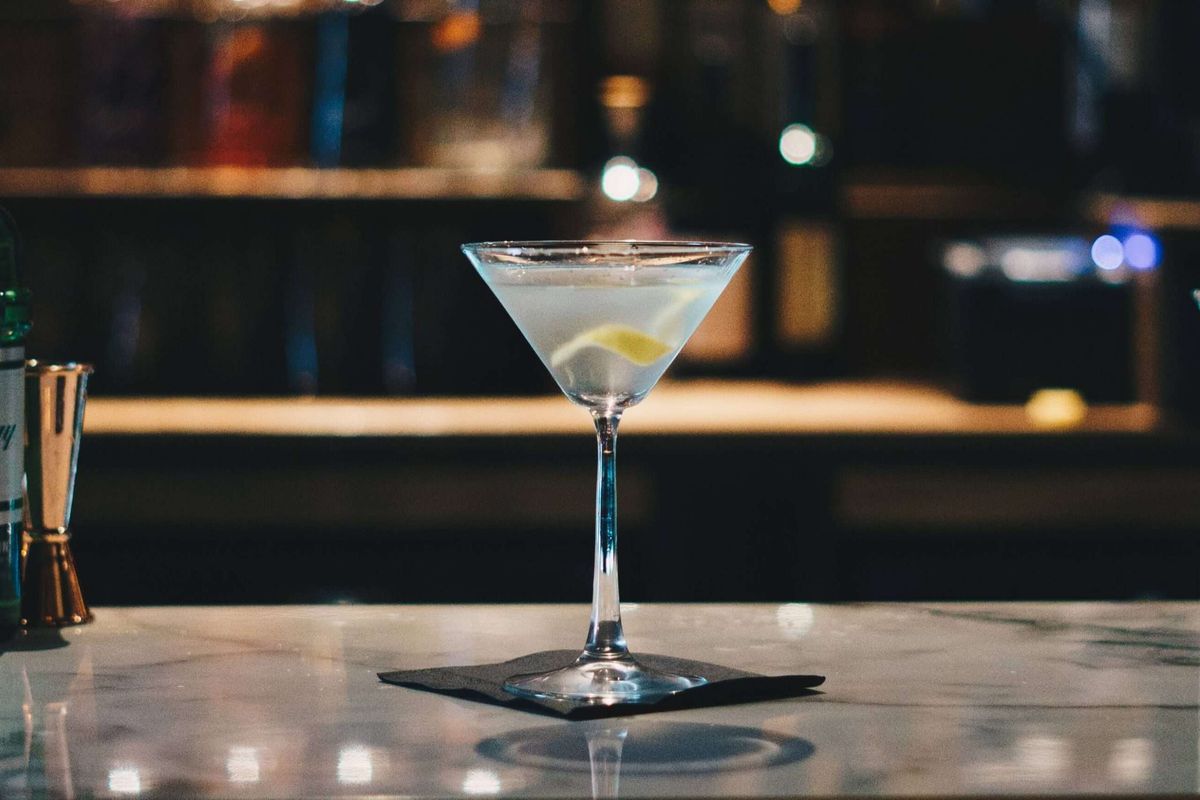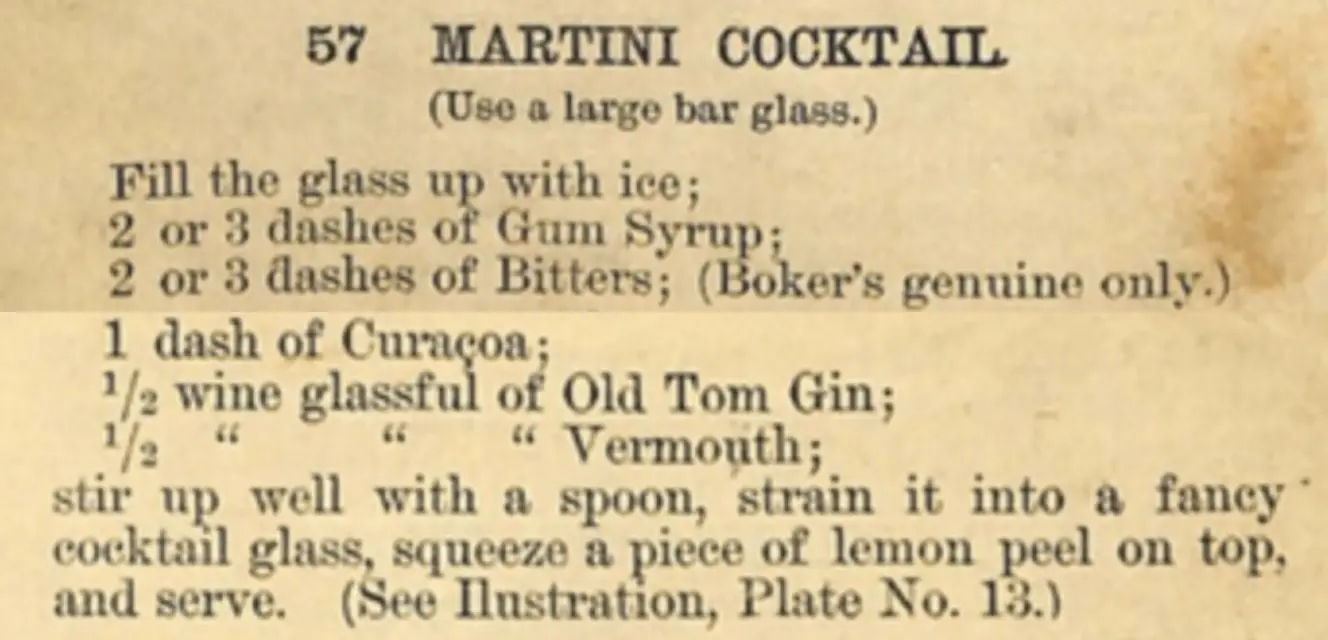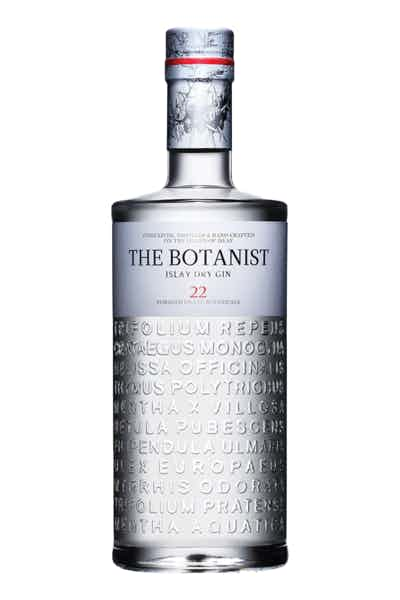How to Order a Martini like a Professional

The martini is a formidable cocktail. It holds a gravitas backed by decades of history and pop culture.
A drink seemingly reserved for black tie affairs or Don Draper. A drink where the clarity implies the elegant strength; no accouterment standing between you and the alcohol.
But perhaps the most intimidating part of the martini is how one should order it. We’ve all heard terms like “dry” or “dirty” or “shaken not stirred.” Sometimes a lemon is involved, others an olive. And to the uninitiated, these might seem like opaque, if not pretentious distinctions.
But for a drink of such few ingredients, these distinctions do matter. I’m here to decipher some of those terms so the next time a leather apron-clad, mustachioed bartender asks for your order, you’ll know how to order a martini like a professional.
But first, what exactly is a martini?
A martini is made from gin, vermouth, and a garnish. That’s it. Though the moniker martini may be generously handed out to other cocktails, an espresso martini is not a martini. Real drinkers know there is no room for anything else.
The exact origins are debatable. Some say the name comes from the vermouth brand Martini & Rossi. Others say it originated as the Martinez cocktail from San Francisco’s Occidental Hotel in the late 1800s.
In any case, around the 1880s, we start seeing references to the Martini cocktail in bartending books such as Harry Johnson’s Bartender Manual in 1888:

Over the next few years, this martini slowly morphs into what we now know it as. By the 1920s and prohibition, it was a cocktail of choice in the United States.
Gin vs. Vodka
I understand there is a “gin vs. vodka” debate when it comes to making a martini. And while there may not technically be a wrong answer, there is definitely a correct answer, and it’s gin.
Gin is complex, with layers of flavor that only get amplified in a martini. There are different styles of gin, different blends of botanicals, all of which can be used as a lever to add complexity to a martini.
On the other hand, Vodka, by definition, is pure. I wouldn’t go as far as to call it flavorless, I know that’s wrong, but it wouldn’t be that much of a stretch.
A classic martini is made from gin. I’m not sure where Vodka entered into the conversation (do I blame James Bond?), but your bartender will likely assume gin if you don’t specify.
But which gin exactly? Depending on which botanicals the gin is made from, the flavor profile can range from heavy on juniper, more citrus-forward, floral and botanical, or even a bit savory.
Try a classic London Dry Gin like Tanqueray if you’re looking for something more juniper-forward. If you want something more citrusy, give Ford’s Gin a shot. For botanical, floral notes, check out The Botanist. And If you’re going to get really wild, Gin Mare is a fantastic Spanish gin with great brininess and salinity.
Personally, I prefer botanical gins, so I lean towards The Botanist as one of the best gins for a martini.

And as we are all travelers here, try and check out any local gins (or gin-adjacent spirits) that you might come across. So many craft distilleries nowadays are using botanicals from the area to impart a sort of local terroir to the spirit. For example, spirits like brennivín or aquavit are fun substitutes and a great way to experience your surroundings.
What’s your style?
With only three ingredients, you’d think it’s a simple drink to make. Still, there is an entire spectrum of nuance and subtleness within those ingredients. And many ways to fuck it up.
In general, there are three main styles of a martini:
Dry – A dry martini uses only a touch of vermouth. There are variations on this, such as “extra dry” or “bone dry,” where the bartender may only swirl vermouth around the glass and dump it out.
Wet – A wet martini uses a higher ratio of vermouth to alcohol. You’ll find these to be a bit less spirit-forward and perhaps a bit sweet.
Dirty – A dirty martini uses olive brine in the drink to give it a savory, salty quality.
The exact measures and ratios of gin and vermouth can vary bartender by bartender. It’s important to note that though I wouldn’t say no to a tall, cold glass of gin, it’s still necessary to have at least a touch of vermouth to be considered a martini.
And don’t forget vermouth is perishable! So after you open it, you’ll need to drink it in the next week or so.
Shaken or stirred?
Ah yes, thanks to James Bond, we have this debate as well. Mixologists, contrarians, and your hipster friends are quick to point out that James Bond orders his martini incorrectly.
And yes, traditionally, the martini is stirred to not “bruise” the gin. Without going into much detail, the act of shaking the martini creates some ice shards and dilutes the drink quite a bit. On the other hand, stirring chills and mixes the martini without losing any of the gin’s nuances.
So, it should usually be stirred.
Though the devil’s advocate and James Bond lover in me will come to the defense of the shaken martini. Some gins, often the botanical and floral ones, can be enhanced by the tiny water droplets. Shaking it can open a bouquet of flavors and aromas you might not otherwise get.

Olive or twist?
So you made it this far; the last step is to add the garnish. The most common garnishes are olives or a twist of lemon peel.
Olives are salty and going to impart a briny, savory quality to your martini. This is obviously good for dirty martinis and martinis that use gins such as Gin Mare that complement the salinity. And plus, there’s a little snack at the end.
The lemon twist will enhance the botanical, citrus, and floral notes. So if you’re using something like The Botanist, a lemon twist will act as a uniting force for the gin and vermouth.
There’s also no shame in ordering an olive and a twist! This is actually my preferred method.
There are more fringe garnishes such as a cocktail onion or even blue cheese stuffed olives, though I would encourage you to stick with the basics. The more layers you add, just end up distracting from the elegance of the martini – it’s supposed to be simple.
But at the end of the day, most people agree you can have whatever garnish you want without harsh judgment (mostly).
So there you are. You’re now ready for your next company holiday party, wedding, soiree, or whenever you need to know how to order a martini. Just compose your three parts and craft your perfect martini order.
But what’s mine, you ask?
“Extra dry gin martini (with the Botanist), stirred, with an olive and a twist.”
Or if you’re like Winston Churchill:
“I would like to observe the vermouth from across the room while I drink my martini.”
But again, I would encourage everyone to experiment with a few different styles to find what suits you best. Ordering a martini is an intimate affair, an expression of individuality. So at the end of the day, who gives a damn – order a martini how you like it.
How do you order a martini? Let me know!
